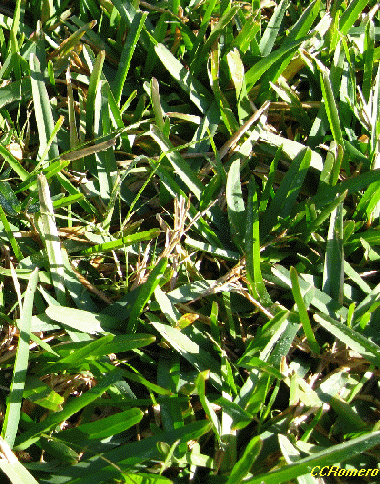Turfgrass and Ornamental Plant Evapotranspiration
and Crop Coefficient Literature Review:
Turfgrass Species in Florida
St. Augustinegreass (Stenotaphrum secundatum (Walt) Kuntze)

 St. Augustinegrass is a warm-season grass. It grows vigorously during the warm (80 to 95 F) months of spring, summer, and early fall.
St. Augustinegrass is a warm-season grass. It grows vigorously during the warm (80 to 95 F) months of spring, summer, and early fall.
Of all the warm season grasses, it is the least cold tolerant and has the coarsest leaf texture, preferring well-drained, humid and fertile soils.
Like other warm-season grasses, it goes dormant and turns brown in the winter. It recovers poorly from drought. St Augustinegrass is the most commonly used lawngrass throughout Florida (Trenholm et al., 1991), and it has been targeted primarily for the homeowner market in Florida (Haydu et al., 2008).
‘Floratam’ is an improved St. Augustinegrass most widely produced and used in Florida. Sodding is the best method for establishment and proper irrigation and fertilization is required to reduce its vulnerability to numerous stresses. A complete recommended fertility rates and calendar guide for St. Augustinegrass fertilization is shown in Trenholm et al., 1991, and how to maintain St. Augustinegrass lawns in McCarty and Cisar, 1991).
Disadvantages
It recovers poorly from drought. There are shade tolerant cultivars existing (e.g. Seville, Delmar, Jade, and possibly Palmetto). It is susceptible to pest problems, like chinch bug, which is considered the major insect pest of this species. It wears poorly and some varieties are susceptible to cold damage (Trenholm et al., 1991).


